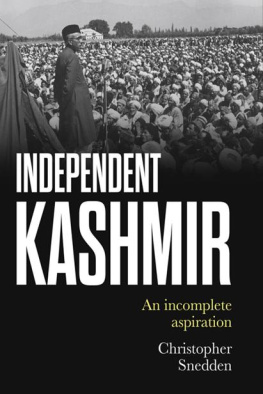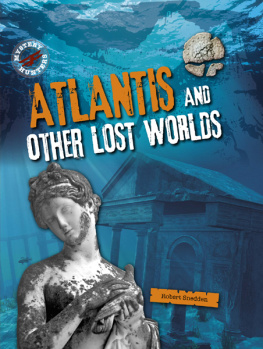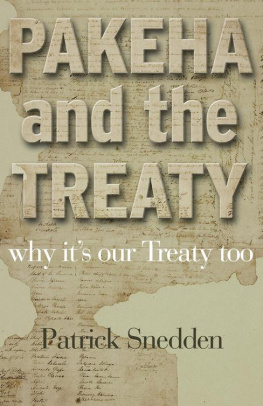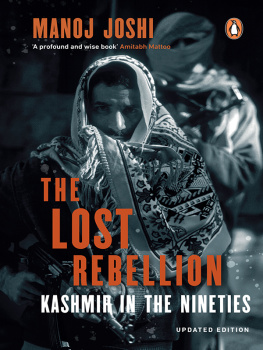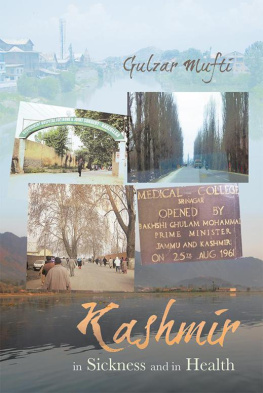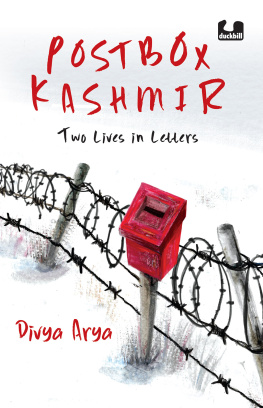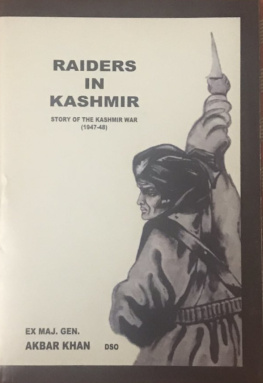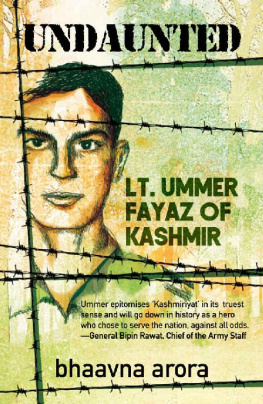UNDERSTANDING KASHMIR AND KASHMIRIS
CHRISTOPHER SNEDDEN
Understanding Kashmir and Kashmiris
HURST & COMPANY, LONDON
For Esther and Chris
First published in the United Kingdom in 2015 by
C. Hurst & Co. (Publishers) Ltd.,
41 Great Russell Street, London, WC1B 3PL
Christopher Snedden, 2015
All rights reserved.
Printed in India
Distributed in the United States, Canada and Latin America by Oxford University Press, 198 Madison Avenue, New York,
NY 10016, United States of America.
The right of Christopher Snedden to be identified as the author of this publication is asserted by him in accordance with the Copyright, Designs and Patents Act, 1988.
A Cataloguing-in-Publication data record for this book is available from the British Library.
ISBN: 978-1-84904-342-7
epub ISBN: 978-1-84904-622-0
www.hurstpublishers.com
CONTENTS
I have been writing this book for some time. I have acquired a lot of my information while undertaking research for a previous book about Azad Kashmir. Many of the people who helped with that book vicariously have helped with this one. Once again, I thank you all very much. More specifically, I acknowledge and thank my wife, Diane Barbeler, who actively helped me to clarify my ideas, and who astutely edited this book. It is a far better product for Dianes involvement. I thank Len Johnston from Malmsbury, Victoria, for suggesting the title, and the staff at the State Library of Victoria, Melbourne, for helping me by locating some particularly interesting old maps and old books. This magnificent public edifice and its collection are national and international assets. I thank John Keay for generously allowing me to use an extract from his book When Men and Mountains Meet: The Explorers of the Western Himalayas 182075 in Appendix I. I thank Victoria Schofield for generously giving me a copy of her excellent book Wavell: Soldier & Statesman when we met in Pakistan in early 2014. I am very grateful to my publisher, Michael Dwyer, at Hurst and Co., London, and to my Gandhian friend, Tom Weber, from Healesville in outer Melbourne, for their ongoing encouragement and support. I thank the mapmaker, Sebastian Ballard, for the excellent maps. Finally, I thank my parents, Esther and the late Chris Snedden, Canberra, for encouraging and developing my curiosity. I dedicate this book to them.
| AD | Anno Domini; Latin for in the year of the/Our Lord; the period after year 0 |
| BC | Before Christ; the period before year 0 |
| CBMs | Confidence building measures |
| CENTO | Central Treaty Organization |
| FATA | Federally Administered Tribal Areas |
| GBian | A resident of Gilgit-Baltistan |
| hydel | hydro-electricity |
| IaK | Indian administered [Jammu and] Kashmir |
| ISI | (Pakistans) Directorate of Inter-Services Intelligence |
| JKLF | Jammu Kashmir [sic] Liberation Front |
| J&K | Jammu and Kashmir |
| KKH | Karakoram Highway |
| km | kilometres |
| LOC | Line of Control that has divided J&K since 1972 into Indian J&K and Pakistan-Administered J&K; before 1972, this was known as the ceasefire line |
| MFN | Most Favoured Nation status (re trade between two nations) |
| MKA | Ministry of Kashmir Affairs (currently known as the Ministry of Kashmir Affairs and Gilgit-Baltistan) |
| MW | megawatts |
| NEFA | North-East Frontier Agency |
| NWFP | North-West Frontier Province (called Khyber Pakhtunkhwa since 2010) |
| PaK | Pakistan administered [Jammu and] Kashmir |
| PLA | (Chinese) Peoples Liberation Army |
| PPP | Pakistan Peoples Party |
| PRC | Peoples Republic of China |
| RIAF | Royal Indian Air Force |
| Rs | rupees |
| SAARC | South Asian Association for Regional Cooperation |
| SEATO | South-East Asia Treaty Organization |
| sq. | square |
| UK | United Kingdom |
| UN | United Nations |
| UNCIP | United Nations Commission for India and Pakistan |
| UNMOGIP | United Nations Military Observer Group in India and Pakistan |
| UNSC | United Nations Security Council |
| US | United States |
| USD | United States dollar/ s |
| USSR | Union of Soviet Socialist Republics; also called the Soviet Union |
| 9/11 | Terrorist attacks in the United States that occurred on 11 September 2001 (which term uses the US date format: September 11, 2001) |
| azadi | Independence |
| Baluchis | People who populate Baluchistan; more recently spelt Balochis |
| Baluchistan | Province in south-western Pakistan; more recently spelt Balochistan |
| Britisher | A term used by Indians and Pakistanis to denote a person of English, Irish, Scots or Welsh derivation, especially for those involved running the British Indian Empire until 1947 |
| crore | Ten million |
| durbar | Court, or administration |
| Indian J&K | Those parts of J&K that India actually controls: Jammu, Kashmir (the Kashmir Valley) and Ladakh |
| jagir | An area that a ruler granted to a loyal servant for the subordinates lifetime or on a hereditary basis, including to collect revenue therein. For example, the hereditary Poonch and Chenani jagirs in the Jammu Province of the princely state of J&K. |
| Jammuite J&K | A person from the Jammu region of J&K Jammu and Kashmir. Depending on the context, this term refers either to the princely state or to the former princely state. |
| J&K-ites | People from Jammu and Kashmir (term coined by author) |
| Khalsa Dal | Army of the Sikh Empire |
| La | Pass, in Tibetan |
| lakh | One hundred thousand |
| lashkar | Army |
| Maharaja | Great ruler |
| Pakistan-Administered J&K | Those parts of J&K that Pakistan is administering until the Peoples Plebiscite is conducted: Azad Kashmir and the Northern Areas (now called Gilgit-Baltistan) |
| Peoples Plebiscite | Authors term for the United Nations-supervised poll that would enable the people of J&K to determine whether J&K, in its entirety, joins India or Pakistan |
| Praja Sabha | Peoples House; the assembly that existed during Maharaja Hari Singhs rule of J&K |
| Pukhtoon/ s | The majority ethnic group that populates NWFP and south-eastern Afghanistan. Also called Pakhtoons or Pathans or, in Afghanistan, Pushtoons or Pashtoons. |
| Raja | Ruler |
| Rishi | Practitioner of a mystical Kashmiri (Rishi) tradition |
| sepoy | Soldier |
| tehsil | Sub-district |
| The Company | East India Company |
| Turkestan also Turkistan | Land of the Turks, roughly comprising eastern (or Russian/Central Asian) and western (Chinese-controlled) parts separated by the Pamir Mountains |


